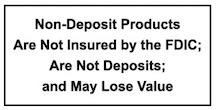A down payment is the amount you pay toward the home yourself. You put a percentage of the home’s value down and borrow the rest through your mortgage loan.
Putting down 20% or more:
A 20% or higher down payment likely provides the best rates and most options. However, think twice if the down payment drains all your savings.
Putting down between 5% and 19%:
You probably have to pay higher interest rates or fees. Lenders most likely require private mortgage insurance (PMI). PMI is an insurance policy that lets you make a lower down payment by insuring the lender against loss if you fail to pay your mortgage. Keep in mind when you hear about “no PMI” offers that doesn’t mean zero cost. No PMI offers often have higher interest rates and may also require you to take out a second mortgage. Be sure you understand the details.
No down payment or a small one of less than 5%:
Low down payment programs are typically more expensive because they may require mortgage insurance or a higher interest rate. Look closely at your total fees, interest rate, and monthly payment when comparing options.
Ask about loan programs such as:
- Conventional loans that may offer low down payment options.
- FHA, which offers a 3.5% down payment program.
- VA, which offers a zero down payment option for qualifying veterans.
- USDA, which offers a similar zero down payment program for eligible borrowers in rural areas.
The advantages of prepayment
Prepayment is when you make additional mortgage payments so you pay down your mortgage early. This reduces your overall cost of borrowing, and you may be able to cancel your private mortgage insurance early and stop paying the premium. Especially if your down payment is less than 20%, it may make sense to make additional payments to pay down your loan earlier.
TIP: Prepayment is your choice. You don’t have to sign up for a program or pay a fee to set it up.

